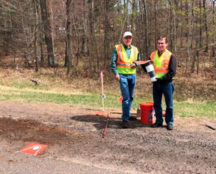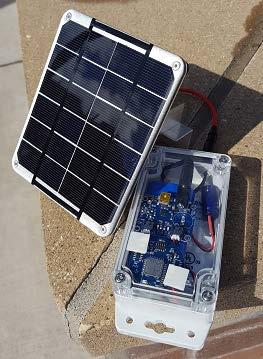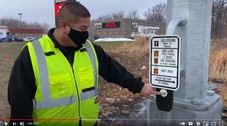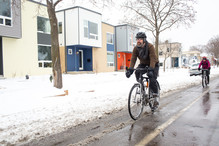
BRIDGES & STRUCTURES — Researchers have determined that many of MnDOT’s existing bridge barriers, despite being built decades before current safety requirements for shape, height and strength, appear to be up to the needs of today’s taller, heavier vehicles and ensure the safety of Minnesota drivers. Researchers evaluated the four main barrier types MnDOT features on its 2,000-plus bridges and found that the most common type, which is used on 55% of the agency’s bridges, meets the height, geometry and strength requirements necessary to safely redirect colliding vehicles.
Researchers determined how MnDOT can retrofit existing barrier systems during rehabilitation and reconstruction projects to bring older barriers up to today’s standards. Planners and designers can look up a barrier type as they prepare repair plans and determine how best to retrofit or replace the barrier with new designs or elements to make them safer for today’s vehicles.
Research Report 2020-24
|

ENVIRONMENTAL — Whenever MnDOT or local agencies add a linear acre of new or improved roadway (impervious surface), they are required by the Minnesota Pollution Control Agency to capture and retain stormwater runoff through an approved treatment. Local agencies have known that the treatments are based upon the contaminants found in runoff from high-volume urban highways—roads with tens of thousands of vehicles passing per day. However, most rural roads have low traffic volume—some as low as 200 vehicles per day.
This project sampled road runoff from 10 rural sites over two years and tested the runoff for contaminants. Results showed that rural roads contain less pollution than high-volume urban roads. Researchers found that ditches with swales, which are already used along many rural roads, are very effective in treating runoff from these roads. They are also less expensive than other best management practices, and are often in the existing right of way, avoiding the need to acquire more land for wet ponds or other treatments.
County engineers will be able to use the study’s data for their future stormwater permits.
Research Report 2020-27
|

TRAFFIC & SAFETY— MnDOT has conducted several research projects that use new technologies to enhance the safety and mobility of pedestrians who are blind or visually impaired as they encounter traffic in the urban environment. This project sought to test the effectiveness of a system developed by University of Minnesota research engineers that receives and transmits traffic signal information to pedestrians who are blind or visually impaired, guiding them across street intersection crosswalks.
MnDOT conducted a real-world test of the system, an Android app called PedNav, at four signalized and two unsignalized intersections in Stillwater, Minnesota. The system can audibly identify the user’s location and indicate when the user should wait or walk across the intersection, including how long in seconds the “walk” signal will show. The system performed very well and was shown to be an effective aid for pedestrians who are blind or visually impaired.
Research Report 2020-28
|

TRAFFIC & SAFETY — While MnDOT’s responsibility to address the needs and safety of nonmotorized travelers—bicyclists and pedestrians—takes many forms in programs and projects, the safety of rural pedestrians has attracted closer scrutiny. Minnesota Walks is a collaboration between MnDOT and the Minnesota Department of Health. Its goal is assuring safe, attractive and convenient places for people to walk. It identified Native Americans as one of six priority state populations who are more likely to walk in their daily lives.
The Advocacy Council for Tribal Transportation, representing the tribes, conveyed five tribes’ interest in participating in a MnDOT project that would examine pedestrian behavior and risks on reservations. They identified reservation locations where pedestrian behavior studies could address safety concerns. Researchers collected video data at 10 problematic roadway sites across four reservations and, in close collaboration with tribal members and others, determined potential countermeasures that could mitigate pedestrian risk at the sites.
Research Report 2020-29
|

MULTIMODAL — A new reference guide gives local road agency planners and designers quick access to the design manuals and guides that can help them decide what bicycle facilities to select for their roadways and how best to design them.
A supplement to the MnDOT Bicycle Facility Design Manual, the quick reference guide was developed in close cooperation with Local Road Research Board and MnDOT experts to answer the questions city and county agencies have about facility selection and design. Based on information from 46 cities and counties in Minnesota, the guide offers lists and links to 36 resources and answers a detailed list of frequently asked questions.
Research Report 2020RIC03
|
 MnDOT’s Office of Research & Innovation and Office of Maintenance hosted, “Winter Research Lightning Talks” on Wednesday, February 25—featuring five, five-minute presentations. Weren't able to attend? A recording is now available on YouTube.
|
|
MnDOT invites and encourages participation by all. If you need an ASL, a foreign language interpreter, or other reasonable accommodation, or need documents in an alternative format (such as braille or large print), please email your request to Janet Miller at ADArequest.dot@state.mn.us or call 651-366-4720.
|